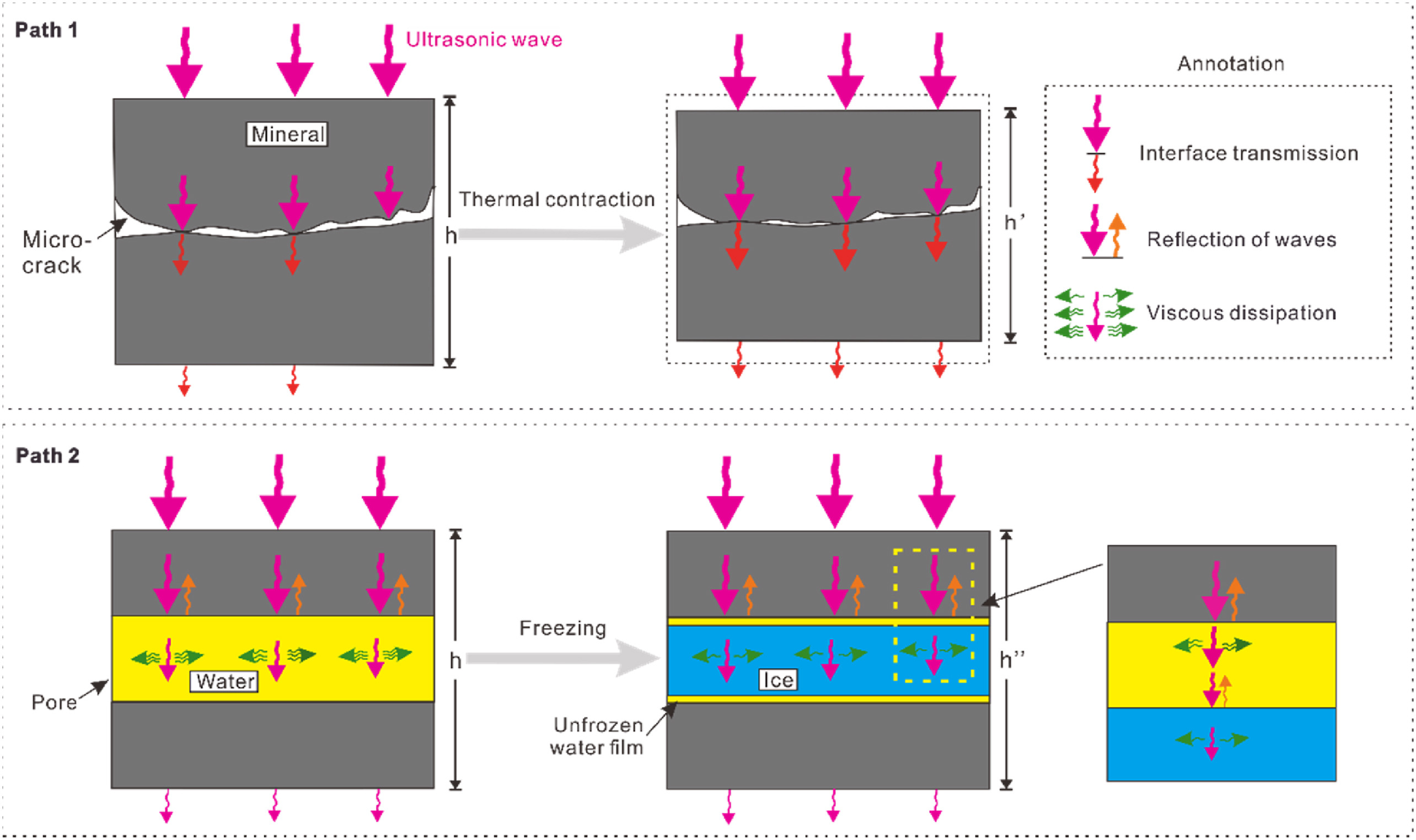JRMGE / Vol 13 / Issue 5
Hysteresis in the ultrasonic parameters of saturated sandstone during freezing and thawing and correlations with unfrozen water content
Liu Yang, Hailiang Jia, Li Han, Huimei Zhang, Liyun Tang
Show More
College of Architecture and Civil Engineering, Xi’an University of Science and Technology, Xi’an, 710054, China
2021, 13(5): 1078-1092. doi:10.1016/j.jrmge.2021.06.006
Received: 2020-11-23 / Revised: 2021-05-10 / Accepted: 2021-06-10 / Available online: 2021-07-27
2021, 13(5): 1078-1092.
doi:10.1016/j.jrmge.2021.06.006
Received: 2020-11-23
Revised: 2021-05-10
Accepted: 2021-06-10
Available online: 2021-07-27
Determining the mechanical properties of frozen rock is highly important in cold-area engineering. These properties are essentially correlated with the content of liquid water remaining in frozen rock. Therefore, accurate determination of unfrozen water content could allow rapid evaluation of mechanical properties of frozen rock. This paper investigates the hysteresis characteristics of ultrasonic waves applied to sandstone (in terms of the parameters of P-wave velocity, amplitude, dominant frequency and quality factor Q) and their relationships with unfrozen water content during the freeze-thaw process. Their correlations are analysed in terms of their potential for use as indicators of freezing state and unfrozen water content. The results show that: (1) During a freeze-thaw cycle, the ultrasonic parameters and unfrozen water content of sandstone have significant hysteresis with changes in temperature. (2) There are three clear stages of change during freezing: supercooled stage (0 °C to −2 °C), rapid freezing stage (−2 °C to −3 °C), and stable freezing stage (−3 °C to −20 °C). The changes in unfrozen water content and ultrasonic parameters with freezing temperature are inverse. (3) During a single freeze-thaw cycle, the ultrasonic parameters of sandstone are significantly correlated with its unfrozen water content, and this correlation is affected by the pore structure. For sandstones with mesopores greater than 50%, there are inflection points in the curves of ultrasonic parameters vs. unfrozen water content at −3 °C during freezing and at −1 °C during thawing. It was found that thermal deformation of the mineral-grain skeleton and variations in the phase composition of pore water change the propagation path of ultrasonic waves. The inflection point in the curve of dominant frequency vs. temperature clearly marks the end of the rapid freezing stage of pore water, in which more than 70% of the pore water freezes. Consequently, the dominant frequency can be used as an index to conveniently estimate the unfrozen water content of frozen rock and, hence, its mechanical properties.
Keywords: Frozen porous rocks, Ultrasonic parameters, Hysteresis, Freeze-thaw, Nuclear magnetic resonance (NMR), Unfrozen water content
Article Data
Author(s) Information
Prof. Hailiang Jia
hailiang.jia@xust.edu.cn

Hailiang Jia obtained his BSc and PhD degrees in Civil and Geological Engineering from China University of Geosciences (Wuhan) in 2010 and 2016, respectively. He is an associate professor at Xi’an University of Science and Technology since 2018. His research interests include (1) rock and soil mechanics and geohazards in cold regions; (2) polar environment and engineering geology; and (3) weathering of stony cultural relics and its conservation. He has been participated in a number of Chinese national projects regarding the above subjects. To date, systematic studies on frost damage mechanisms of rock and mechanical properties of frozen rock have been conducted by him both experimentally and theoretically. He is a member of Chinese Society for Rock Mechanics and Engineering (CSRME) and European Geosciences Union (EGU).

